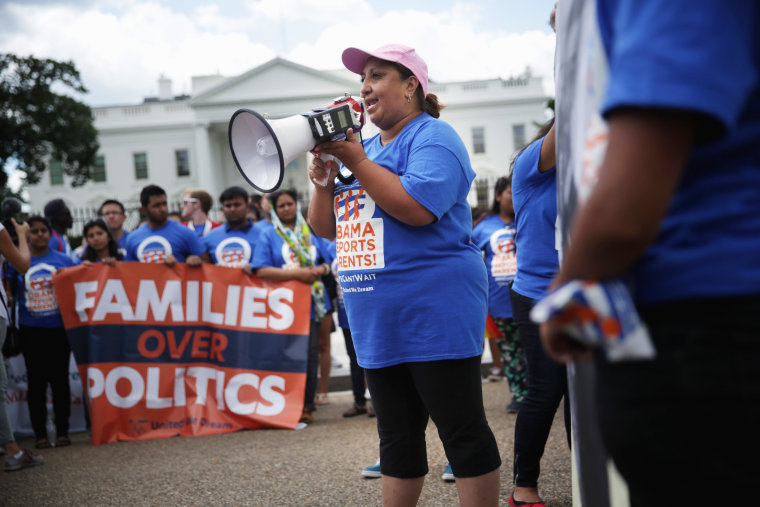Should Barack Obama put deportations on hold for more immigrants through executive order, states and localities will play key roles in helping their residents prove eligibility.
Immigrants here illegally will turn to state and local governments for documents such as school tax records, utility bills, proof of high school graduation, school transcripts and other paperwork.
Some states have faced the task of implementing immigration policy before, namely when the 1986 amnesty program was established.
But since 1986, some of the fastest growing immigrant populations have been in states with little to no experience implementing such policies, said Michele Waslin, manager of the Pew Charitable Trusts Immigration and the States.
“All states and localities really need to be thinking about this and preparing for how they might respond if there is a new legalization program or some kind of expanded DACA program,” Waslin said.
Waslin and others spoke at a Pew Charitable Trusts panel assessing the impact of the two-year-old Deferred Action for Childhood Arrivals, DACA, program on states and localities.
Congress adjourned for summer recess without a final immigration reform bill worked out after House Republicans refused to advance on it. Obama is considering using his executive authority to make administrative immigration reforms. Some people are hoping he will authorize a DACA-like program, which shields young immigrants from deportation and allows them to work, for older immigrants and parents of young people with DACA.
Some states already can borrow from 1986 experiences. For instance, New York created a hotline and created a task force to identify barriers to legalization, Waslin said.
More recently some states have held town halls and community meetings and provided materials in multiple languages to help people eligible for DACA through their application process.
States that provided driver’s licenses already have begun processes for verifying documents and tax payments and have created outreach programs to connect with immigrant communities, Waslin said.
Amalia Rioja, Illinois Gov. Pat Quinn’s deputy chief of staff, said that the state did a lot of education around DACA to let people know they should apply, started a scholarship program and a commission to raise money for it. Illinois also has provided driver’s licenses for immigrants here illegally.
Illinois also has created welcoming centers based in immigrant communities. Staffers at the multiple agency centers conduct comprehensive assessments of immigrants to connect them with services for which they are eligible, Rioja said.
If Obama takes executive action, the centers “would be a great model to expand to be able to assist individuals who could benefit from having some sort of status here,” she said.
“We try to approach it as best we can in a piecemeal approach, prioritizing and filling in the gaps where we have the authority to do that,” Rioja said. “Hopefully, there will be a point in time where we don’t have to do that anymore.”
More than 500,000 young immigrants are working and not facing potential deportation through the DACA program.
Audrey Singer, who is studying the effect of DACA at the metropolitan level for The Brookings Institution, said immigrants from more than 200 countries have applied for DACA, with 77 percent of applications from Mexican youth.
Government data shows 75 metropolitan areas account for 82 percent of all requests nationwide and 11 metropolitan areas are home to more than 11,000 DACA applicants. Los Angeles has the largest number, Singer said.
Interviews conducted for her research show that the farther immigrants were from school the more likely they needed nontraditional forms of documentation such as library cards, Pay Pal histories, mobile phone contracts, enrollment in post-high school courses.
“Finding that evidence and documenting their time in the U.S. gets much harder the farther away from arrival that you get,” Singer said.
As Obama’s decision time on immigration nears, American attitudes on immigration are changing.
While there is still broad support for a path to legal status for immigrants now living in the U.S. illegally, that support dropped 5 percentage points since February to 68 percent last month, said Mark Hugo Lopez, Hispanic research director at Pew Research Center.
Despite that drop, support among Americans for passing immigration legislation has risen from 49 percent in February to 61 percent last month, Lopez said.
